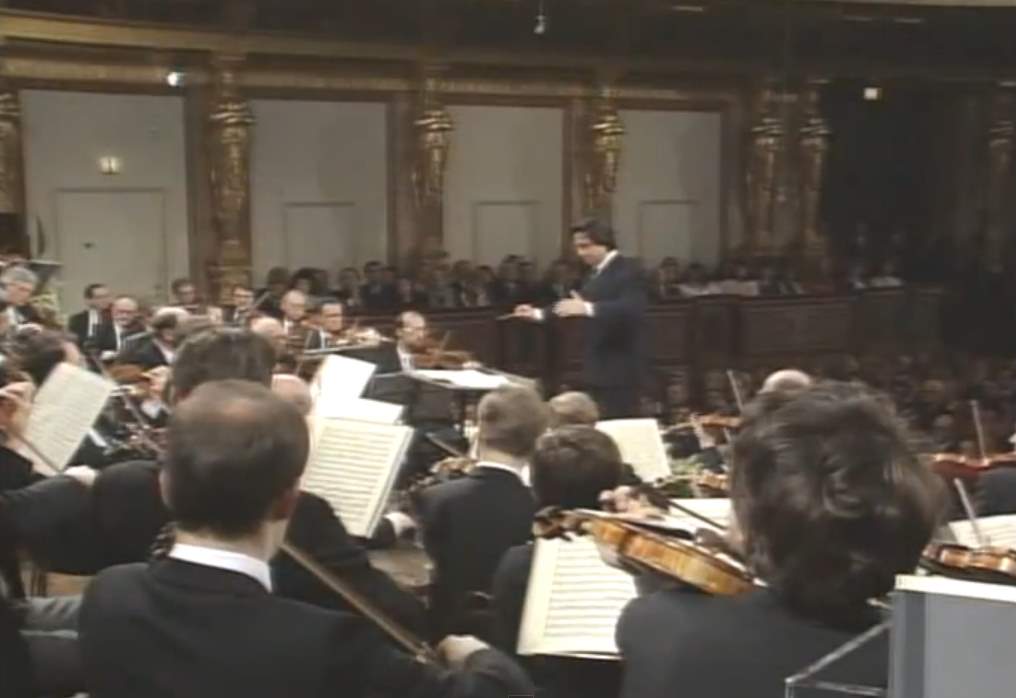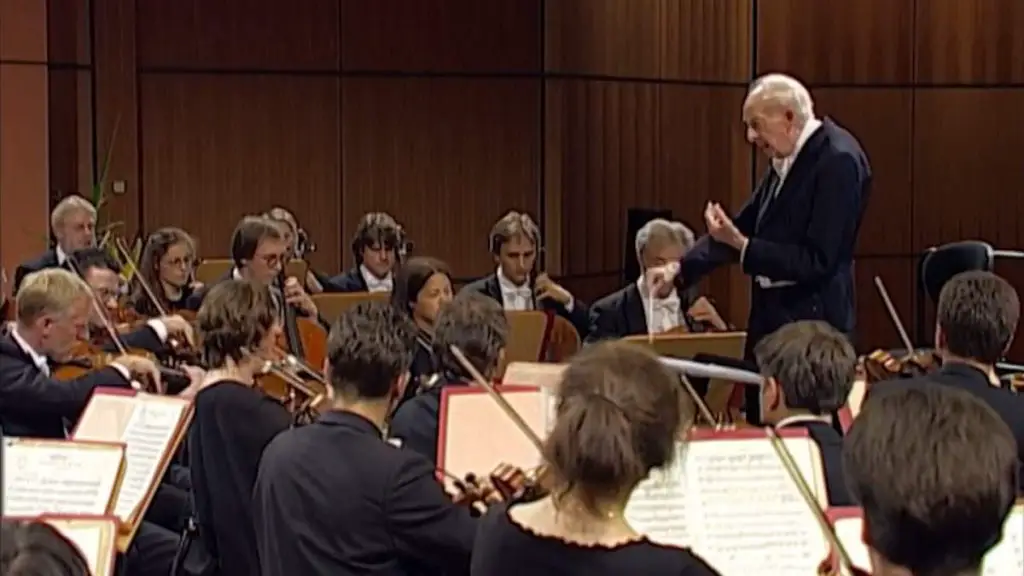Conducted by Christoph Eschenbach, the hr-Sinfonieorchester (Frankfurt Radio Symphony Orchestra) performs Franz Schubert’s Symphony No. 8 in B minor, D. 759, commonly known as the “Unfinished Symphony” (German: Unvollendete). Recorded during the Rheingau Music Festival at the Eberbach Abbey (Kloster Eberbach) on June 19, 2016. Published by hr-Sinfonieorchester channel.
Schubert’s Symphony No. 8, the “Unfinished Symphony”
Schubert’s Symphony No. 8 in B minor, popularly known as the “Unfinished Symphony,” is one of the most enigmatic works in the orchestral repertoire. Composed in 1822, it remains incomplete, with only two movements fully orchestrated. Despite its unfinished state, the symphony is regarded as one of Franz Schubert’s finest achievements and a pivotal piece in the Romantic symphonic tradition. The reasons why Schubert never completed the work remain a subject of speculation among music historians. Some suggest that he may have abandoned it due to his ongoing struggle with illness, while others think he may have simply moved on to other projects or felt uncertain about its direction. Whatever the reason, the existing movements are so compelling that the work has endured as one of his most celebrated compositions.
The Unfinished Symphony is notable for its expressive depth and innovative orchestration. It combines lyrical melodies, dramatic contrasts, and rich harmonic language that highlight Schubert’s unique ability to convey profound emotion. The symphony opens with a hauntingly beautiful theme that immediately captures the listener’s attention, setting the tone for a deeply introspective and emotional journey. Schubert’s orchestral writing is masterful, blending woodwinds, strings, and brass to create a tapestry of sound that is both intimate and powerful. There is a sense of longing and melancholy that runs throughout the symphony, reflecting Schubert’s own struggles and his deep emotional sensitivity.
The symphony also stands out for its departure from the conventional symphonic form of the time. Rather than adhering strictly to the established structures used by his predecessors, Schubert allowed his themes to unfold in a more organic and free-flowing manner. This approach, combined with his intricate harmonic progressions, gives the music a distinctive character that is both timeless and deeply personal. The Unfinished Symphony remains one of Schubert’s most beloved works, not just for its beauty and emotional depth, but also for the mystery that surrounds it. It continues to captivate audiences around the world, inviting listeners to reflect on its unfinished nature and the poignant beauty of what Schubert was able to complete.
Movements
There are two complete and completely orchestrated movements:
1. Allegro moderato in B minor
The first movement of Schubert’s Unfinished Symphony, marked Allegro moderato in B minor, opens with a mysterious and haunting melody played softly by the strings, setting a contemplative tone. This theme is soon echoed by the solo oboe and clarinet, creating a sense of intimate dialogue. Schubert’s approach to transitioning between sections is characteristically minimalistic, with only four measures of horn music modulating to G major, a surprising and effective harmonic shift.
The second theme, introduced by the cellos and subsequently taken up by the violins, is beautifully lyrical, accompanied by gentle syncopations, adding a sense of wistfulness to the music. This theme is abruptly interrupted by a dramatic passage featuring heavy, emphatic orchestral chords interspersed with pauses. These elements serve as a striking contrast, creating a tension that propels the music forward.
An important and unique moment in this movement occurs in measure 109, where Schubert holds a tonic “B” pedal in the second bassoon and first horn beneath a dominant F♯ chord, creating a striking dissonance. This moment, reminiscent of Beethoven’s “Eroica” Symphony, is a bold harmonic choice that adds depth to the music’s emotional landscape. Notably, this dissonance is sometimes mistakenly removed in performance due to editorial changes, so conductors need to ensure that Schubert’s original vision is preserved.
Unusually for a sonata form, the development section begins with a quiet restatement of the opening melody in E minor – a key generally reserved for later recapitulation. The music gradually builds in intensity, leading to a powerful climax with a dramatic orchestral variant of the opening theme, marked by the prominent use of trombones. It is only after this climax that D major, the expected relative major of B minor, makes its first significant appearance. Schubert’s choice to delay this modulation adds to the unpredictability and emotional complexity of the movement.
The recapitulation follows the sonata-form conventions, restating the initial themes, but with a twist—Schubert reintroduces the lyrical second theme in D major rather than the expected B major. The movement closes in B major, leading into a coda that recalls the opening theme, reworked dramatically to prepare the listener for the emphatic concluding chords. This unconventional handling of form and harmony contributes to the enigmatic and deeply emotional nature of the Unfinished Symphony’s first movement, making it one of the most evocative openings in the symphonic repertoire.
2. Andante con moto in E major
The second movement of Schubert’s “Unfinished Symphony” in E major unfolds in a sonatina form, characterized by the absence of a traditional development section but enhanced by an extended, elegiac coda that functions as a concluding development. The movement alternates between two contrasting themes, masterfully blending lyrical warmth with a quietly dramatic depth.
The lyrical first theme is introduced through an intricate interplay of horns, low strings, brass, and high strings, all moving in counterpoint. This melody exudes a serene and expressive quality, representative of Schubert’s delicate craftsmanship. The second theme, in contrast, begins with an evocative transition: four unharmonized notes in the first violins subtly outline the tonic chord of C♯ minor. The plaintive theme then emerges in the solo clarinet, offering a minor-key reflection that soon shifts to the oboe in C♯ major-demonstrating Schubert’s characteristic use of major-minor interplay that adds emotional complexity and harmonic richness.
A dramatic closing theme brings the full orchestra together in C♯ minor, ultimately resolving in D♭ major (the enharmonic equivalent of C♯ major). A short, skillful transition leads back to the tonic key of E major, ushering in the recapitulation. In an intriguing departure from convention, Schubert restates the second theme in the subdominant key of A minor rather than the expected tonic parallel, with the theme initially played by the oboe and then echoed by the clarinet, reversing their roles from the exposition.
The coda begins with a new theme-essentially an extension of the two-bar cadential figure that opens the movement. This figure evolves into the first violin’s laconic triadic transition motto, which seamlessly introduces a restatement of the first theme by the woodwinds in a distant A♭ major. The motto then leads back to E major for a final, transformed rendition of the first theme. This culminates in an extended, reflective version of the opening cadential figure, bringing the movement to a gentle, yet definitive close.
This movement exemplifies Schubert’s masterful orchestration and emotional depth, blending simplicity and complexity with harmonic nuance, while ultimately leaving listeners suspended in a contemplative and serene state.
Sources
- Symphony No. 8 “Unfinished” (Schubert) on Wikipedia
- ‘Schubert’s “Unfinished” Symphony: Haunting, Mysterious, Groundbreaking’ on The Listeners’ Club website
- Franz Schubert: Symphony No. 8 in B minor (‘Unfinished’) on the Classic FM website
- Franz Schubert – Symphony No. 8, “Unfinished” on the L.A. Phil website
![Shubert: Symphony No. 9 The Great [Janowski]](https://cdn-0.andantemoderato.com/wp-content/uploads/2023/04/Schubert-Symphony-No-9-The-Great-Marek-Janowski-1024x576.jpg)


![Schubert: Symphony No. 8 - the Unfinished Symphony [Iván Fischer, Budapest Festival Orchestra]](https://cdn-0.andantemoderato.com/wp-content/uploads/2023/12/Ivan-Fischer-Schubert-Symphony-No-8-Unfinished-Symphony-1024x576.jpg)